The Jerusalem Temple Mount stands as a pivotal intersection of faith and history, revered by Jews, Christians, and Muslims alike. Home to the magnificent Dome of the Rock, this site not only showcases impressive architectural craftsmanship but also embodies centuries of spiritual significance and conflict. As visitors approach, they encounter a rich tapestry of legends and beliefs woven into its very stones. Yet, the complexities surrounding access and security protocols add layers to the experience that often catch newcomers off guard. What might one discover about the narratives that shape this iconic landmark?
About Your Stay
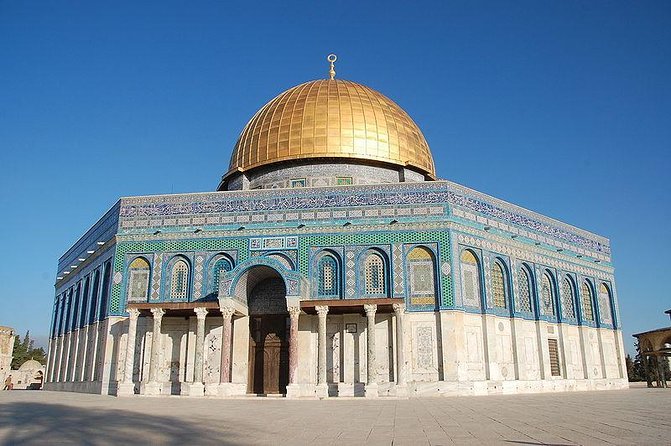
- The Jerusalem Temple Mount is sacred to Judaism, Christianity, and Islam, housing significant historical and religious sites.
- The Dome of the Rock, built in the late 7th century, features a stunning golden dome and intricate mosaics.
- Visitors must dress modestly, covering knees and shoulders, and follow strict security protocols including bag checks.
- Access to the Dome of the Rock’s interior is restricted to Muslims, while non-Muslims can admire its exterior.
- Guided tours often include surrounding sites like the Mount of Olives, enhancing the historical and spiritual experience.
Historical Significance
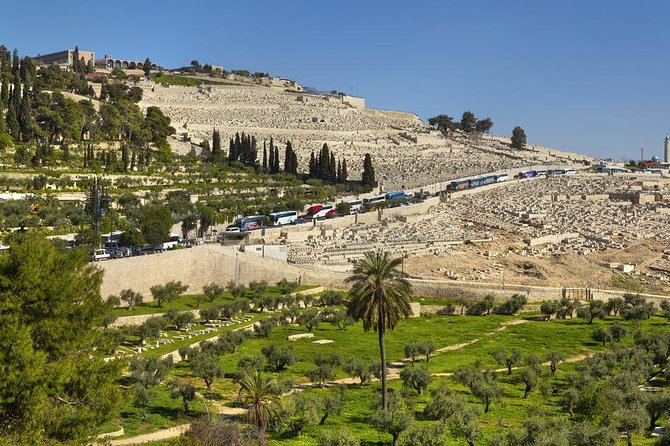
When exploring the historical significance of the Jerusalem Temple Mount, one can’t help but feel the weight of centuries of religious and cultural heritage.
This sacred site holds immense importance for Judaism, Christianity, and Islam, serving as a focal point for countless religious narratives and events. For Jews, it’s the location of the ancient Temples, symbols of divine connection.
Christians revere it due to its proximity to pivotal events in Jesus’ life. Muslims cherish it as the site of Muhammad’s night journey.
Over the years, the Temple Mount has become a symbol of faith and conflict, reflecting broader struggles over identity and belonging.
Its layered history continues to shape the spiritual landscape of Jerusalem, making it a must-visit for those seeking deeper understanding.
You can also read our reviews of more tours and experiences in Jerusalem.
Architectural Features
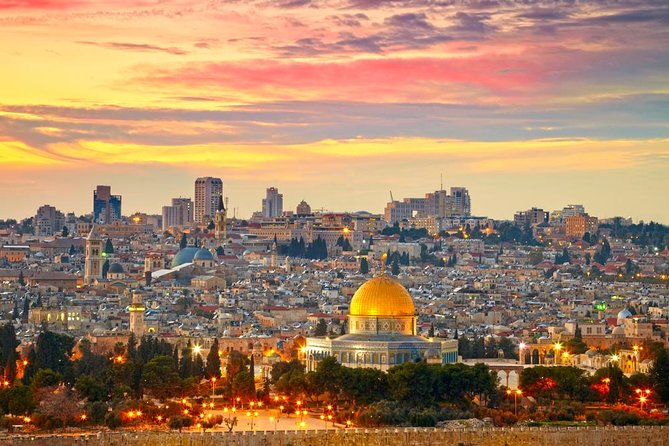
Often regarded as a breathtaking example of religious architecture, the Jerusalem Temple Mount showcases a blend of historical and contemporary influences.
Its expansive platform, measuring approximately 37 acres, features intricate stonework and magnificent arches that reflect the artistry of various periods.
The iconic Dome of the Rock, with its striking golden dome, stands as a symbol of Islamic architecture, adorned with stunning mosaics and intricate calligraphy.
Surrounding the site, ancient walls and gates further enhance its historical significance, showcasing the craftsmanship of past civilizations.
The juxtaposition of the Islamic structures with remnants of earlier Jewish temples highlights the Mount’s complex narrative.
This architectural marvel continues to inspire awe, drawing visitors to its sacred grounds.
Visiting the Temple Mount
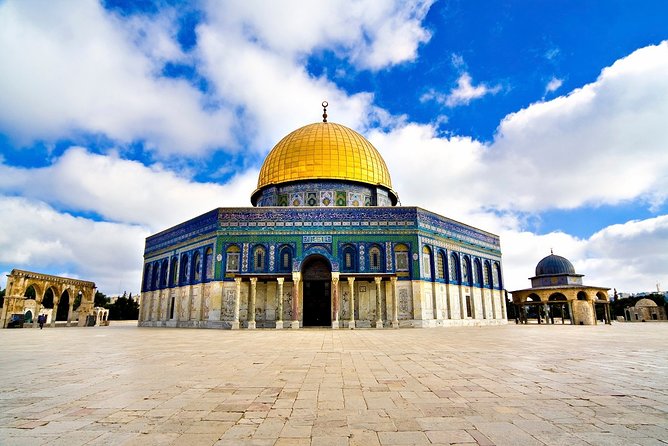
Visiting the Temple Mount offers a unique experience that immerses travelers in the rich tapestry of Jerusalem’s history and spirituality. This sacred site, revered by Jews, Muslims, and Christians alike, invites visitors to explore its profound significance.
Tourists can enjoy guided excursions that often include the Mount of Olives and the Old City, ensuring a comprehensive understanding of the area. It’s essential to dress modestly, covering knees and shoulders, and be prepared for strict security measures.
While access to the Dome of the Rock is limited to Muslims, the surrounding areas provide breathtaking views and a sense of tranquility. With a maximum group size of 40, visitors can appreciate this spiritual haven while adhering to local customs and regulations.
Dome of the Rock Insights
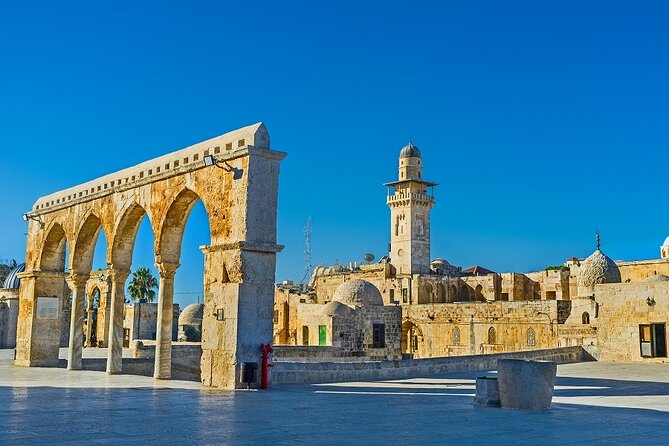
The Dome of the Rock stands as an iconic symbol of Jerusalem’s diverse religious heritage, captivating visitors with its stunning architecture and historical significance.
Built in the late 7th century, it’s one of the oldest and most revered Islamic structures in the world. The intricate tile work and golden dome reflect exquisite craftsmanship, drawing attention from all angles.
Situated on the Temple Mount, the site is sacred to Muslims, Jews, and Christians alike, adding layers of spiritual meaning. Its location is believed to be where the Prophet Muhammad ascended to heaven.
Although access to the interior is restricted to Muslims, the exterior remains a must-see for anyone exploring Jerusalem’s rich tapestry of faith and history.
Security Protocols Explained
Accessing the Dome of the Rock and Temple Mount involves strict security protocols designed to ensure the safety of all visitors. Before entering, guests undergo thorough bag checks, and no religious objects or weapons are permitted.
Only Muslims are allowed inside the Dome of the Rock, while non-Muslim visitors can admire its stunning exterior. The site maintains a serene atmosphere, which is crucial for its religious significance.
Visitors should also dress modestly, covering knees and shoulders, to respect local customs. Children under four aren’t permitted, and group sizes are limited to a maximum of 40 travelers.
These measures reflect the importance of security and respect for this sacred site, making the experience both safe and meaningful for everyone involved.
- Palestine Revealed: 2-Day Private Tour From Jerusalem
- Travel From Jerusalem To Bethlehem and Dead Sea – Daily Group West Bank Tour
- Jerusalem Boutique Tour From Tel Aviv
- Private Tour Jerusalem Old City
- Ashdod Shore Excursion: Jerusalem and Bethlehem – for Cruise Ship Guests Only
- Travel to Bethlehem Half Day Guided Tour From Jerusalem & Telaviv
Tour Highlights
Experience the rich history and spiritual significance of Jerusalem’s Temple Mount through a well-curated tour that brings together iconic landmarks and cultural insights.
This group tour starts at the Mount of Olives, offering stunning views before heading to the Old City. Guests visit the Temple Mount, with its breathtaking Dome of the Rock viewed from outside, and explore the Davidson Center archaeological park.
The tour includes a comfortable, air-conditioned vehicle and a professional guide, ensuring a seamless experience. Participants enjoy hotel pickup and drop-off, making it easy to join.
Modest dress is required for holy sites, enhancing the reverence of this extraordinary journey. With a 4.7 rating, it promises an unforgettable exploration of Jerusalem’s rich heritage.
Practical Tips for Visitors
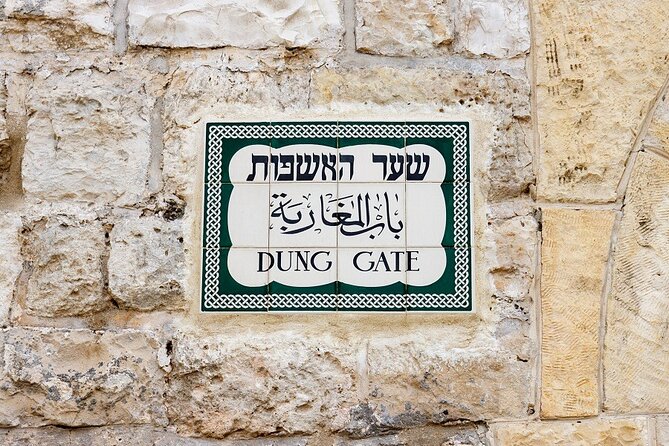
Planning a trip to Jerusalem’s Temple Mount requires some thoughtful preparation to ensure a smooth visit.
Visitors should dress modestly, covering their knees and shoulders, as this is a requirement for entry. Since security measures are strict, it’s crucial to avoid bringing religious items or weapons, and to expect thorough checks.
Arriving early helps to beat the crowds, especially during peak times. While the Dome of the Rock is accessible only to Muslims, the surrounding areas offer stunning views.
Visitors should also consider joining a guided tour, which often includes transportation and local insights. Lastly, keep an eye on the weather and plan accordingly, as conditions can change rapidly in this historic location.
Reviews and Experiences
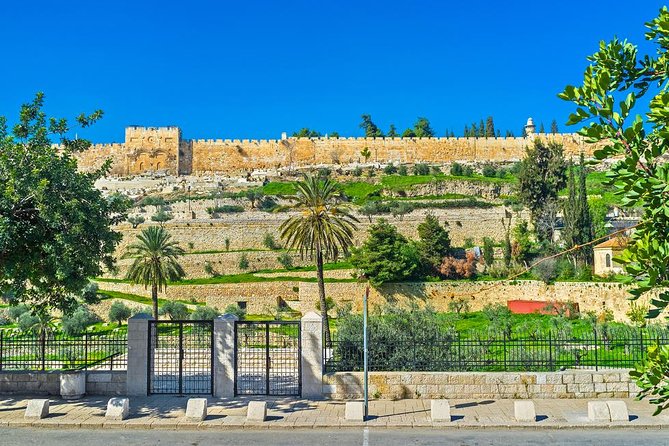
Visitors often share a profound sense of awe when exploring Jerusalem’s Temple Mount.
Many travelers praise the knowledgeable guides who provide rich historical context, enhancing their experience. The breathtaking views from the Mount and the intricate details of the Dome of the Rock leave a lasting impression.
Guests appreciate the well-organized tours that include visits to the Mount of Olives and the Davidson Center archaeological park.
While the strict security measures can feel daunting, most find them necessary for the site’s preservation.
With a solid 4.7 rating from previous participants, the tour is recognized for its professionalism and thoroughness.
Questions About Your Stay
What Are the Dress Code Requirements for Visiting the Temple Mount?
Visitors must adhere to modest dress codes when visiting holy sites. It’s required that they cover their knees and shoulders. This ensures respect for the sacredness of the area and its cultural significance.
Can Non-Muslims Enter the Dome of the Rock?
Non-Muslims can’t enter the Dome of the Rock. The site maintains strict access policies, allowing only Muslims to enter. Visitors can still enjoy the surrounding areas, appreciating the historical and architectural significance from outside.
Is Photography Allowed on the Temple Mount?
Visitors often wonder about photography rules at sacred sites. Generally, restrictions apply, with many locations prohibiting photography to maintain respect and sanctity. It’s essential for travelers to comply with guidelines provided by their guides or authorities.
What Are the Operating Hours for the Temple Mount?
He asked about the operating hours, noting that the schedule varies by season. Typically, it opens early in the morning and closes in the afternoon, but checking current timings before visiting is wise.
Are There Any Age Restrictions for Visiting the Temple Mount?
The tour has age restrictions, stating it’s not suitable for children under four. This ensures a focused experience for older participants, allowing the guide to manage the group effectively while maintaining safety during the visit.
Booking Your Stay
The Jerusalem Temple Mount and the Dome of the Rock embody centuries of religious significance and architectural brilliance. Visitors leave enriched by the site’s complex narratives and spiritual essence. With its stunning mosaics and vibrant history, the Dome stands as a testament to faith that transcends boundaries. As one explores the Temple Mount, they not only witness a remarkable landmark but also engage with the rich tapestry of cultural and religious traditions that define this sacred space.
More Tour Reviews in Jerusalem
Not for you? Here's more things to do in Jerusalem we have recnetly reviewed
- 2 Best Shopping Tours In Jerusalem
- 5 Best 2 Day Tours In Jerusalem
- 5 Best Full-Day Tours In Jerusalem
- Bob Marley Mausoleum Nine Miles From Occh Rios
- Jerusalem From One End to the Other- by Rail
- Dead Sea 1/2 Day Mini Group From Jerusalem. up to 6 Pax Only
- Capernaum, Nazareth, and the Sea of Galilee Day Trip From Jerusalem
- Day Trip to the Dead Sea Valley With Garytheguide
- Jerusalem to Ben Gurion Airport Private Transfer
- Old City Jerusalem Adventure With Private Guide Ed Snitkoff
- Jerusalem Temple Mount & Dome of the Rock
- Private Transfer Between Ben Gurion Airport and Jerusalem
